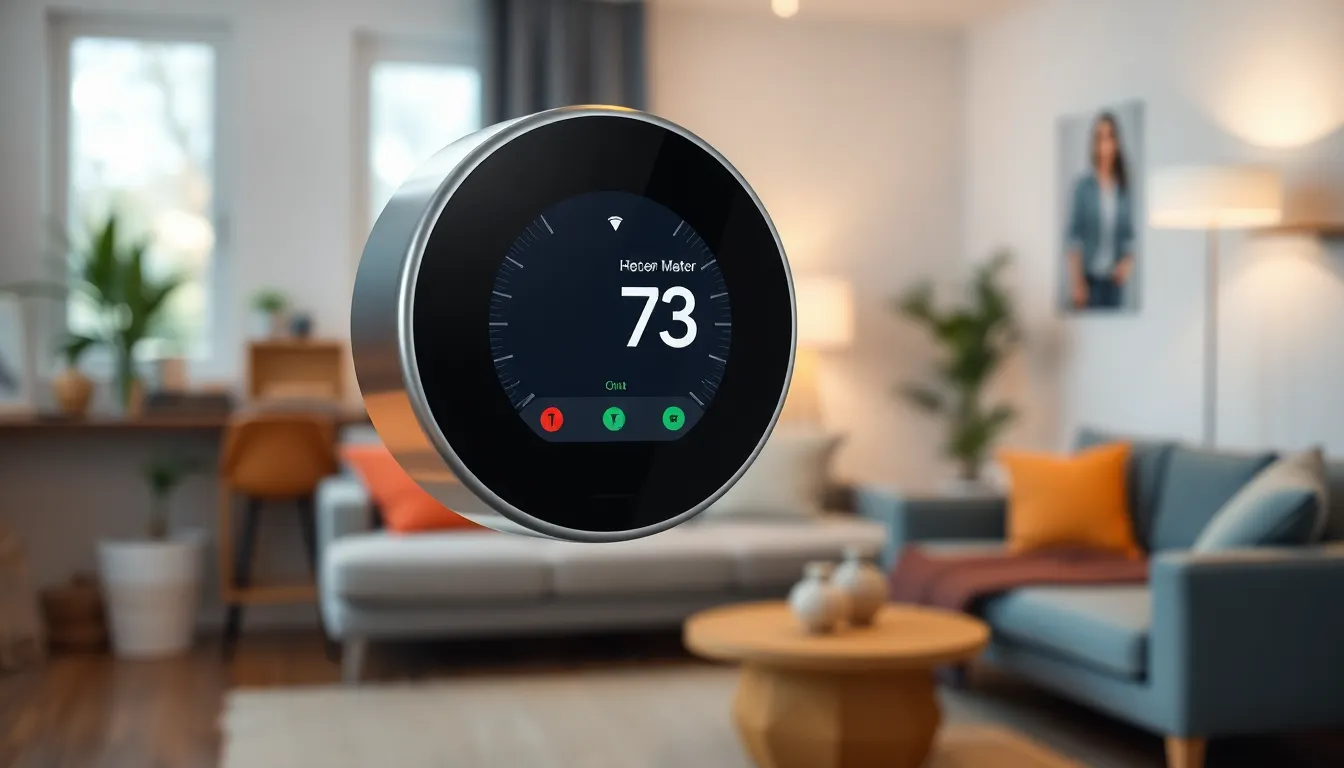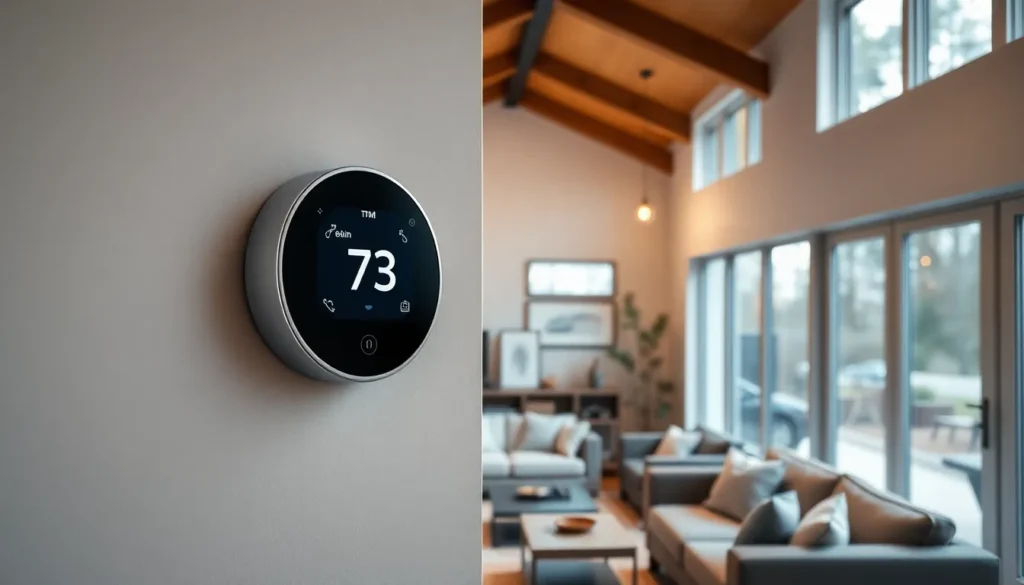In a world where temperatures can swing from cozy to arctic in the blink of an eye, temperature automation scripts are like the unsung heroes of climate control. Imagine a life where you never have to fumble with thermostats again—sounds dreamy, right? These nifty little scripts do all the heavy lifting, ensuring your environment stays just how you like it, whether you’re working from home or lounging on the couch.
Table of Contents
ToggleOverview of Temperature Automation Scripts
Temperature automation scripts streamline climate control by automatically regulating indoor temperatures. These scripts enhance comfort by adapting environments efficiently.
Definition and Purpose
Temperature automation scripts are programmed sequences that adjust heating, ventilation, and air conditioning settings based on specific criteria. They serve to maintain desired temperature levels without manual input. Users can schedule temperature changes for different times or respond to real-time environmental data. The primary purpose lies in energy efficiency and convenience, minimizing energy consumption while ensuring comfortable living and working spaces.
Key Benefits
Temperature automation scripts offer numerous advantages including energy savings. By optimizing heating and cooling systems, users reduce wasted energy, leading to lower utility bills. Enhanced comfort represents another key benefit; interior environments stay consistently pleasant. Scripts can learn preferences over time, adjusting to user needs automatically. Flexibility is also a significant advantage, allowing adjustments according to weather changes or occupancy. Overall, these scripts significantly improve the quality of life and promote resource efficiency.
Types of Temperature Automation Scripts

Temperature automation scripts can be categorized into two main types: predefined scripts and customizable scripts. Each type offers distinct advantages suited to different user needs.
Predefined Scripts
Predefined scripts come with built-in settings designed for common scenarios. These scripts enable users to easily select from options like “home,” “away,” or “sleep,” adjusting temperatures automatically based on time or occupancy. The convenience lies in their quick setup, allowing users to implement effective temperature control without significant technical knowledge. Examples include standard comfort settings that reduce heating or cooling when a space is unoccupied. Organizations often benefit from this simplicity, streamlining their climate control processes and reducing energy costs.
Customizable Scripts
Customizable scripts provide more flexibility and tailored solutions. Users can modify parameters based on specific preferences or unique environmental conditions. By programming such scripts, individuals adjust temperature settings according to personal habits or seasonal changes efficiently. These scripts can also integrate with smart home systems, enhancing connectivity and responsiveness. Users gain the ability to set unique schedules, making it easier to optimize temperature control for energy efficiency and comfort. Tailored solutions often lead to improved user satisfaction and an overall enhanced indoor climate experience.
Implementation Process
Temperature automation scripts involve structured steps and specific tools to ensure effective execution and integration into climate control systems. Understanding these elements enhances user experience and promotes optimal efficiency.
Steps to Create Scripts
Creating temperature automation scripts consists of several critical steps. First, define the objectives, such as specific temperature settings or schedules. Next, gather data regarding heating or cooling requirements based on the user’s environment. After that, select the type of script to use, either predefined or customizable, according to the desired functionality. Then, code the script using a programming language or automation platform, ensuring clarity and precision in syntax. Following this, test the script in a controlled environment to identify any issues. Lastly, implement the script within the climate control system and regularly monitor its performance for adjustments.
Tools and Software
Several tools and software options facilitate the creation of temperature automation scripts. Popular programming languages like Python or JavaScript provide flexibility and power for scripting needs. Automation platforms, such as Home Assistant or OpenHAB, offer user-friendly environments for implementing smart home integrations. Additionally, cloud services, including AWS Lambda or Google Cloud Functions, enable remote execution of scripts for more complex operations. Using specialized libraries within these tools can enhance functionality and streamline the process, ensuring successful implementation of automation solutions.
Best Practices for Temperature Automation Scripts
Effective temperature automation scripts enhance climate control systems. Implementing best practices leads to optimal performance and energy efficiency.
Testing and Validation
Testing scripts in controlled environments ensures functionality. Validation supports accuracy and reliability, confirming scripts meet specified objectives. Begin with small-scale trials to observe performance before full implementation. Use feedback from these trials to refine scripts further, addressing any issues that arise. Conduct integration tests with existing systems to ensure compatibility. Consider utilizing simulation tools that replicate real-life scenarios for thorough assessment. Document results from tests, providing clear records for future reference. Quality assurance at this stage guarantees smooth operation and maximizes energy-saving potential.
Monitoring and Adjustments
Constant monitoring of deployed scripts helps maintain optimal performance. Utilize analytics tools to track temperature data and evaluate script effectiveness. Collect data regarding energy consumption, user comfort levels, and system responsiveness. Analysis of this data can reveal trends, identifying areas for improvements or necessary adjustments. Be prepared to tweak parameters based on observed patterns, ensuring scripts adapt to changing conditions. Effective communication with users enhances satisfaction, as feedback can drive successful modifications. Frequent updates keep scripts current with the latest user needs and environmental factors, maximizing efficiency.
Temperature automation scripts represent a significant advancement in climate control technology. By automating the regulation of indoor temperatures, they not only enhance comfort but also promote energy efficiency. Users can enjoy a seamless experience as these scripts adapt to their preferences and environmental changes.
The ability to choose between predefined and customizable scripts allows for tailored solutions that fit individual needs. As organizations implement these systems, they can expect reduced energy costs and improved user satisfaction. With the right tools and best practices, temperature automation scripts can transform how spaces are managed, ultimately leading to a more sustainable and comfortable living environment.













